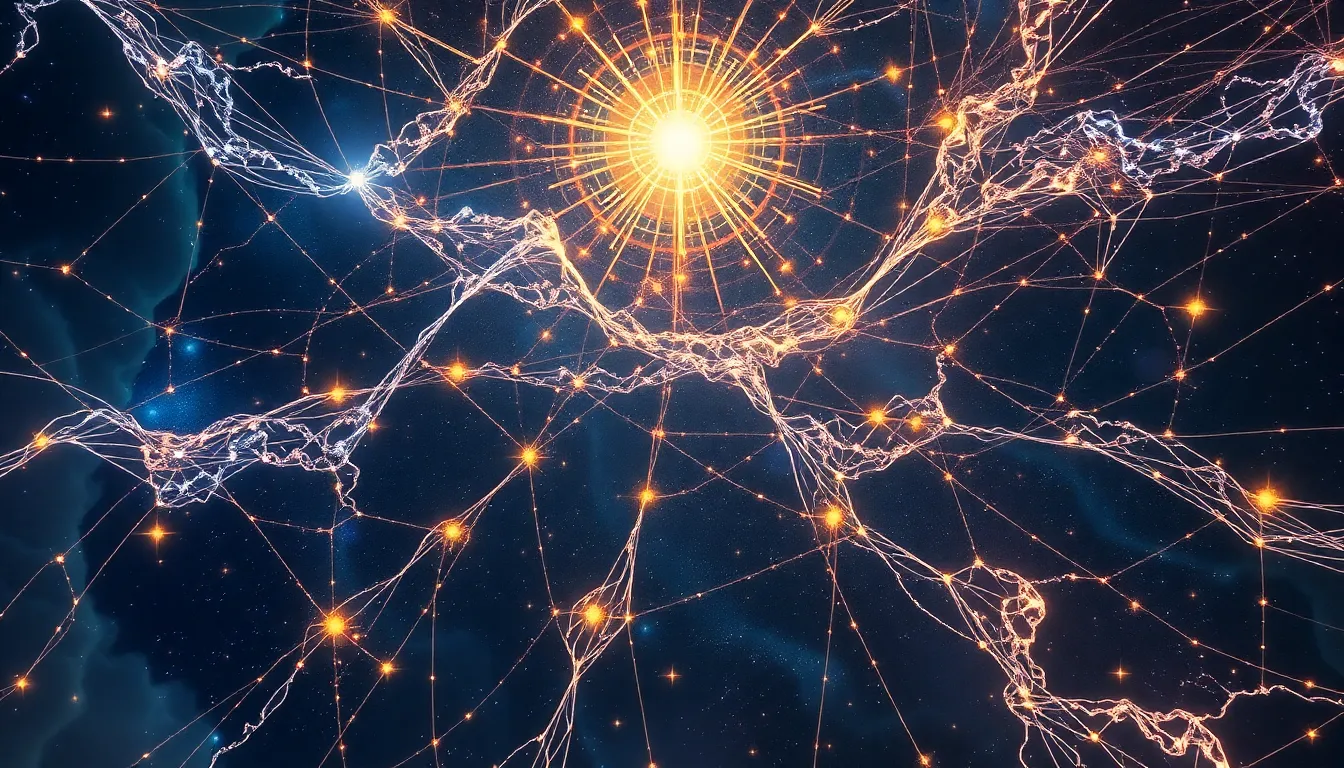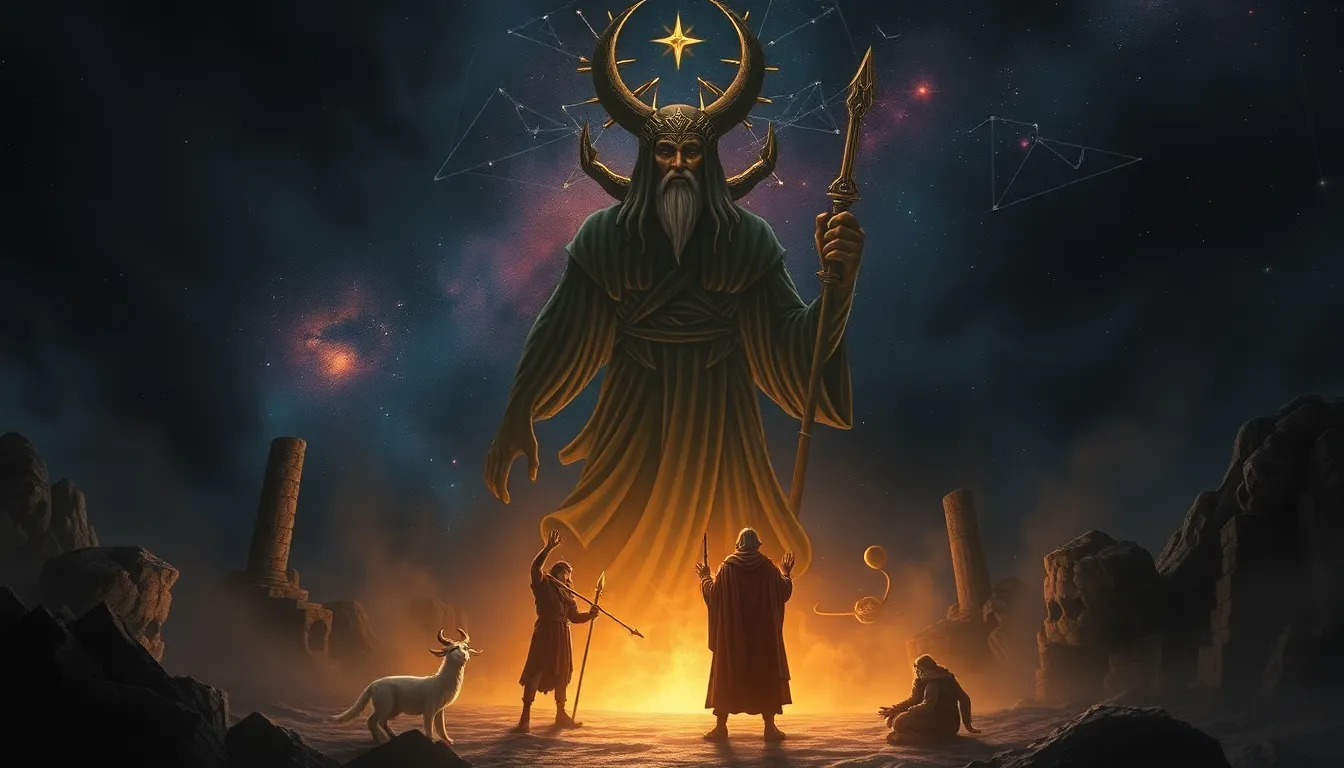The Cosmic Web: How Creation Myths Interconnect Cultures
I. Introduction
The concept of the cosmic web refers to the intricate and interconnected nature of the universe, resembling a vast network that binds together various threads of existence. In many ways, creation myths from different cultures serve as these threads, weaving a tapestry that reflects the beliefs, values, and identities of the people who tell them.
Creation myths play a crucial role in shaping cultural identity, offering explanations for the origins of the world, humanity, and the cosmos. They are not merely stories; they embody the collective consciousness of societies, providing insights into their historical, spiritual, and moral frameworks.
This article aims to explore the cosmic web of creation myths, examining their common themes, structures, and the ways they interconnect cultures across time and space.
II. Understanding Creation Myths
A. Definition and purpose of creation myths
Creation myths are narrative accounts that explain how the universe, Earth, and humanity came into existence. They serve various purposes, including:
- Explaining natural phenomena
- Establishing cultural values and norms
- Providing a sense of identity and belonging
B. Common themes and motifs across various cultures
Despite the diversity of cultures, many creation myths share common themes, such as:
- Cosmic chaos giving way to order
- The role of a supreme being or creator
- The emergence of humanity from primordial elements
C. The role of oral tradition in the preservation of these myths
Oral tradition has been pivotal in the preservation and transmission of creation myths. Through storytelling, these narratives have been passed down through generations, allowing cultures to maintain their identity and continuity. The oral nature of these myths also allows for adaptation and evolution, reflecting changes in societal values and beliefs.
III. The Structure of the Cosmic Web
A. Explanation of the cosmic web metaphor
The cosmic web metaphor illustrates the interconnectedness of all creation myths, likening them to strands in a vast tapestry. Each myth represents a unique perspective, yet they are all part of a larger narrative that reflects humanity’s quest for understanding.
B. How creation myths serve as threads in the cosmic web
Every creation myth can be seen as a thread that contributes to the overall structure of the cosmic web. These threads intertwine, revealing shared elements and themes that foster a sense of unity among diverse cultures.
C. Interconnectedness of different cultures through shared narratives
The interconnectedness of creation myths highlights the common human experience. By comparing these narratives, we can uncover the shared values and beliefs that transcend geographical and cultural boundaries, emphasizing our collective search for meaning.
IV. Comparative Analysis of Creation Myths
A. Major creation myths from different cultures
Several prominent creation myths offer fascinating insights into the beliefs of different cultures:
- Genesis: The Judeo-Christian account of creation, where God creates the world in six days and rests on the seventh.
- Enuma Elish: The Babylonian creation myth that describes the battle between the god Marduk and the chaos monster Tiamat.
- Popol Vuh: The Mayan creation narrative that details the formation of humanity from maize and the adventures of the Hero Twins.
B. Similarities and differences in themes
While there are notable similarities in themes such as chaos giving way to order, divine intervention, and the significance of humanity, differences also emerge:
- In Genesis, creation is a deliberate act by a singular God, whereas in Enuma Elish, creation arises from conflict.
- The Popol Vuh emphasizes the importance of nature and agricultural elements in the formation of humanity.
C. The significance of nature and the cosmos in these narratives
Nature and the cosmos often play central roles in creation myths, reflecting the environment in which a culture exists. These elements are not only physical but also symbolic, representing the relationship between humanity and the universe.
V. The Role of Geography in Shaping Myths
A. Influence of the environment on creation stories
The geography of a culture profoundly influences its creation myths. Elements such as mountains, rivers, and deserts shape the narratives and the values of the people living in those environments.
B. Case studies: Myths from riverine vs. desert cultures
For example, riverine cultures, such as those along the Nile or the Indus, often emphasize fertility and sustenance in their creation myths. In contrast, desert cultures may focus on survival and resilience, reflecting the harshness of their environment.
C. How geography fosters cultural exchange and myth adaptation
Geography also facilitates cultural exchange. Trade routes and migration lead to the sharing and adaptation of myths, allowing for the blending of narratives and beliefs.
VI. Archetypes and Symbols in Creation Myths
A. Examination of recurring archetypes
Many creation myths feature recurring archetypes, such as:
- The Creator: A divine being responsible for the creation of the universe.
- The Trickster: A figure that introduces chaos or challenges the established order.
B. The symbolism of creation elements
Creation elements like water, light, and darkness carry significant symbolism across cultures:
- Water: Often symbolizes life, renewal, and the primordial state of existence.
- Light: Represents knowledge, order, and the dispelling of chaos.
- Darkness: Can embody chaos, the unknown, or the absence of creation.
C. Psychological implications of these archetypes across cultures
The psychological implications of these archetypes can be profound, influencing how societies perceive their own existence and their relationship with the universe. They provide frameworks for understanding human behavior and societal dynamics.
VII. The Impact of Colonization and Globalization
A. How colonization affected indigenous creation myths
Colonization has had a devastating impact on many indigenous cultures, often leading to the suppression or alteration of their creation myths. Traditional narratives were frequently dismissed as primitive or pagan, resulting in a loss of cultural identity.
B. The blending and clashing of myths in a globalized world
Globalization has created a complex landscape where myths can blend and clash. This interaction can result in new hybrid narratives that reflect the realities of a multicultural world.
C. Preservation efforts and the revival of traditional narratives
In response to these challenges, many communities are actively working to preserve and revive their traditional creation myths, recognizing their importance in maintaining cultural heritage and identity.
VIII. Contemporary Interpretations of Creation Myths
A. How modern science interacts with ancient creation stories
Modern science, particularly in fields like cosmology and anthropology, intersects with ancient creation stories. This interaction raises questions about the nature of existence and humanity’s place in the universe.
B. The role of art, literature, and media in retelling these myths
Art, literature, and media play vital roles in retelling and reinterpreting creation myths. They offer new perspectives and encourage dialogue about the significance of these narratives in contemporary society.
C. New age spirituality and its reinterpretation of creation narratives
New age spirituality often seeks to reinterpret creation myths, integrating them into modern belief systems. This reinterpretation reflects a growing desire for holistic understanding and connection to the cosmos.
IX. The Importance of Intercultural Dialogue
A. Promoting understanding through shared creation myths
Intercultural dialogue fosters understanding through the shared exploration of creation myths. By recognizing common threads, cultures can build bridges and celebrate their diversity.
B. Case studies of intercultural collaborations inspired by these narratives
There are numerous case studies illustrating successful intercultural collaborations that draw inspiration from these narratives. Such collaborations can lead to innovative art projects, educational initiatives, and community-building efforts.
C. The potential for creation myths to inspire future generations</h3



